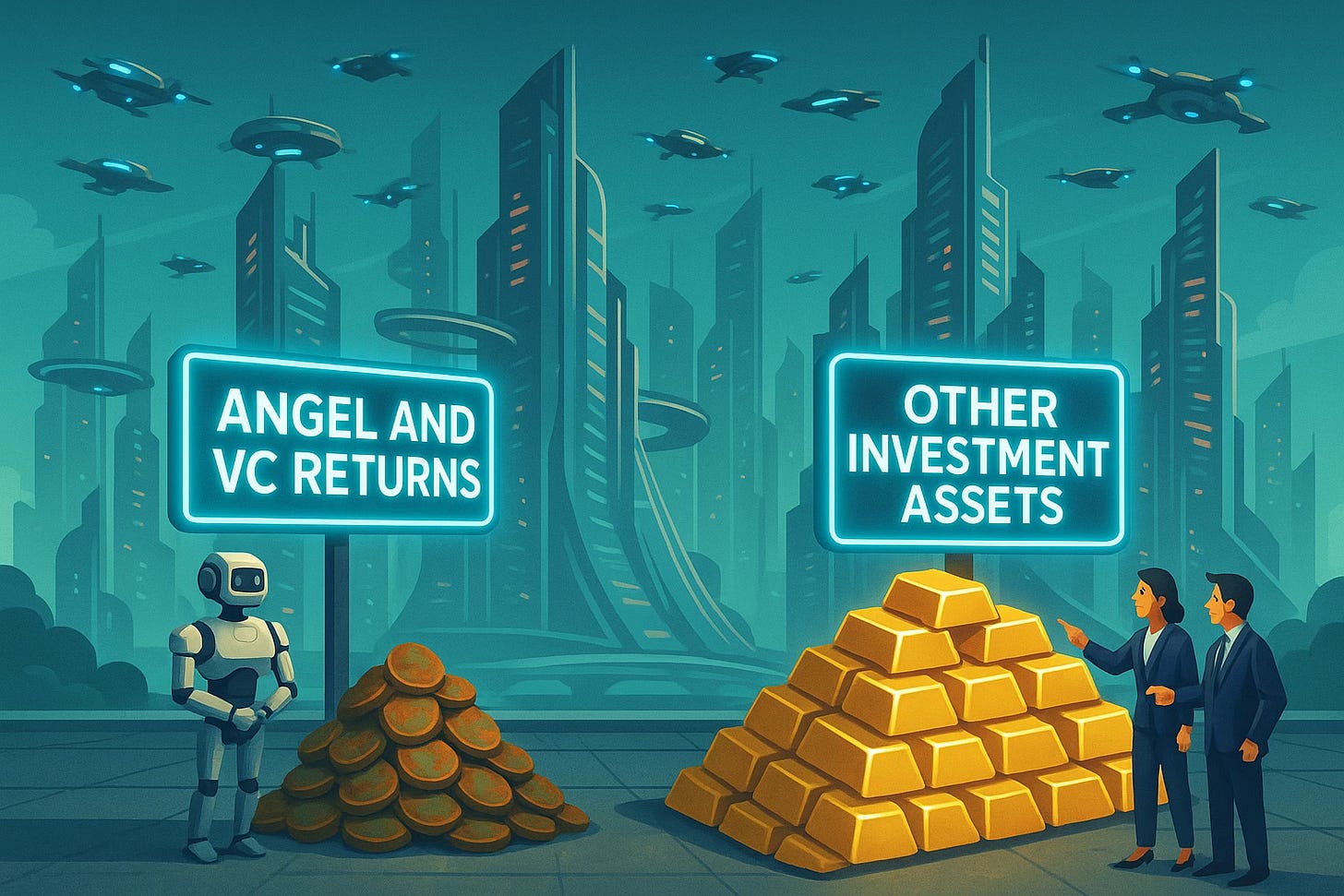The Liquidity Trap: What’s Broken in Venture and Angel Investing Today
Why Angel and VC Investing No Longer Add Up
At this time, as asset classes, angel investing and venture capital are simply and ultimately unappealing. Here are some of the reasons:
Traditional Investment and Exit Paths No Longer Apply: The traditional VC model — backing early-stage startups with the expectation of rapid scaling and a major IPO based on the minimal capital allocations — is no longer delivering as it once did. With a very narrow IPO market and significant amounts of cash on the sidelines, investors and founders prioritize profitability and unit economics over rapid growth.
Exit Timelines for Angel and VC Investments. Cash returns from M&A exits now take longer to materialize:
For angel investors, the average exit now takes about 4 years, primarily through acquisitions (90% of exits). While 5–7 years is typically the expected time horizon for the cash return on investment, actual timelines vary widely by industry, company maturity, and market conditions.
For VC, exit timelines have lengthened over time. As of 2022, acquisitions occur around 6.3 years after investment (up from 4.6 years in 2005), though longer when measured from a company’s founding. Standard VC holding periods now range from 7–10 years, and more, especially for early-stage deals.
Exit timing is heavily influenced by industry sector (with biotech and deep tech taking longer), prevailing market conditions, exit strategy (acquisition vs. IPO), and the company's business model.
New Investment Strategies are Emerging: VC firms are adopting new strategies, focusing on micro VC funds, secondaries, and public equities. Some are even exploring alternative investment structures like equity-for-services.
Startup Focus on Profitability and Efficiency is Antithetical: Investors now prioritize distinct unit economics, demonstrable profitability paths, and tighter operational discipline in their portfolio companies. This shift is also influencing founders to adopt more disciplined growth strategies.
Shift in LP Priorities: VC-backers, limited partners (LPs), are increasingly demanding faster returns and are shifting their investments to areas with more immediate prospects for returns.
Rise of Alternative Funding Models: As alternatives to traditional VC, new funding models on the investment landscape, such as debt-based financing, royalty financing, and revenue-based financing, are gaining traction.
With traditional angel investing, VC, and exit models breaking down, this is a particularly challenging time to be an angel or venture capital investor. The old playbook is outdated, and the risks of traditional angel and VC investing have never been higher.
The Cash-on-the-Sidelines Issue
A significant amount of capital – known as "dry powder" – is sitting uninvested in VC funds, according to a PitchBook report. This can be attributed to a combination of factors, including a large influx of capital during the pandemic, and an investment focus on fewer, larger-scale – mainly AI deals being done.
The Operating Models of VC Firms
VCs have been impacted by accelerators and venture studios, which build companies in-house, gaining a larger market share, while traditional venture firms are increasingly acting as capital allocators, directing funds toward the most promising opportunities rather than deeply operating startups.
Conclusion: A Time for Caution
Given the structural shifts underway, angel investing and venture capital are no longer the compelling asset classes they once were. Traditional investment and exit paths have narrowed, capital remains idle, and even the operating models of VC firms are evolving toward less hands-on, more allocator-driven approaches. Meanwhile, alternative funding models are gaining traction, and limited partners demand faster, more reliable returns. In contrast, public equities offer greater liquidity, more transparent pricing, and more immediate access to cash — attributes that angel and VC investments increasingly lack. For investors seeking both returns and flexibility, it’s becoming clear: the risks of angel and venture investing now far outweigh the rewards. This is a moment to think twice — and perhaps look elsewhere.





I will be encouraging a change. Because while tech has helped an enormous amount of people, if this old investment model continues to dominate, new companies solving some of the planets biggest problems (and where the answer is not primarily tech) will continue to fail because of the mismatch in the VC/Angel dynamics. Bring on the new investment models and bring on a new type of start-up!